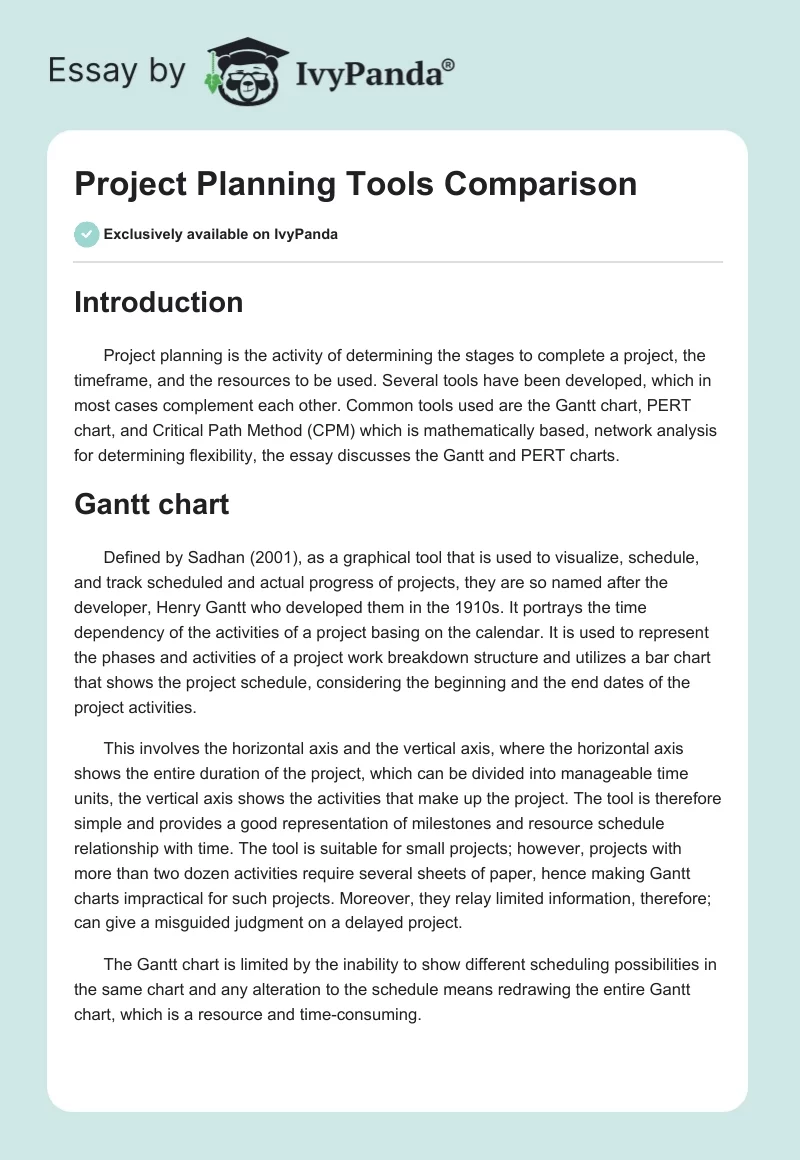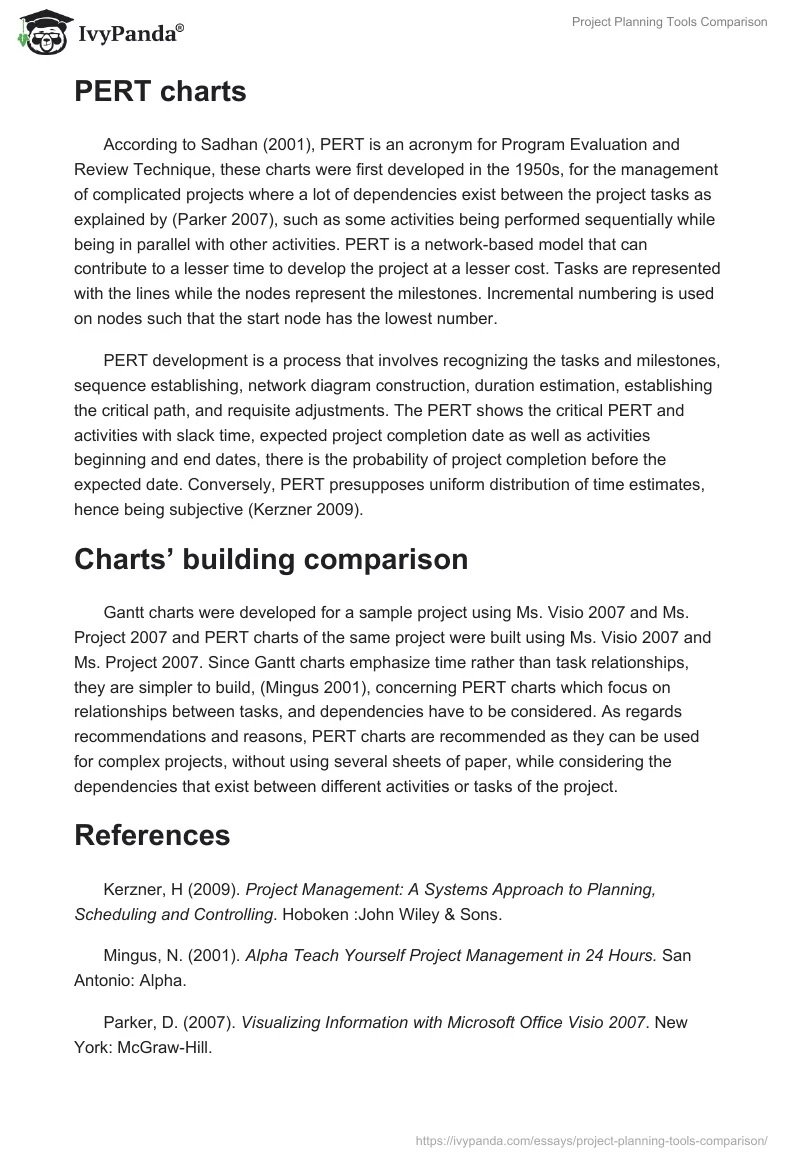Introduction
Project planning is the activity of determining the stages to complete a project, the timeframe, and the resources to be used. Several tools have been developed, which in most cases complement each other. Common tools used are the Gantt chart, PERT chart, and Critical Path Method (CPM) which is mathematically based, network analysis for determining flexibility, the essay discusses the Gantt and PERT charts.
Gantt chart
Defined by Sadhan (2001), as a graphical tool that is used to visualize, schedule, and track scheduled and actual progress of projects, they are so named after the developer, Henry Gantt who developed them in the 1910s. It portrays the time dependency of the activities of a project basing on the calendar. It is used to represent the phases and activities of a project work breakdown structure and utilizes a bar chart that shows the project schedule, considering the beginning and the end dates of the project activities.
This involves the horizontal axis and the vertical axis, where the horizontal axis shows the entire duration of the project, which can be divided into manageable time units, the vertical axis shows the activities that make up the project. The tool is therefore simple and provides a good representation of milestones and resource schedule relationship with time. The tool is suitable for small projects; however, projects with more than two dozen activities require several sheets of paper, hence making Gantt charts impractical for such projects. Moreover, they relay limited information, therefore; can give a misguided judgment on a delayed project.
The Gantt chart is limited by the inability to show different scheduling possibilities in the same chart and any alteration to the schedule means redrawing the entire Gantt chart, which is a resource and time-consuming.
PERT charts
According to Sadhan (2001), PERT is an acronym for Program Evaluation and Review Technique, these charts were first developed in the 1950s, for the management of complicated projects where a lot of dependencies exist between the project tasks as explained by (Parker 2007), such as some activities being performed sequentially while being in parallel with other activities. PERT is a network-based model that can contribute to a lesser time to develop the project at a lesser cost. Tasks are represented with the lines while the nodes represent the milestones. Incremental numbering is used on nodes such that the start node has the lowest number.
PERT development is a process that involves recognizing the tasks and milestones, sequence establishing, network diagram construction, duration estimation, establishing the critical path, and requisite adjustments. The PERT shows the critical PERT and activities with slack time, expected project completion date as well as activities beginning and end dates, there is the probability of project completion before the expected date. Conversely, PERT presupposes uniform distribution of time estimates, hence being subjective (Kerzner 2009).
Charts’ building comparison
Gantt charts were developed for a sample project using Ms. Visio 2007 and Ms. Project 2007 and PERT charts of the same project were built using Ms. Visio 2007 and Ms. Project 2007. Since Gantt charts emphasize time rather than task relationships, they are simpler to build, (Mingus 2001), concerning PERT charts which focus on relationships between tasks, and dependencies have to be considered. As regards recommendations and reasons, PERT charts are recommended as they can be used for complex projects, without using several sheets of paper, while considering the dependencies that exist between different activities or tasks of the project.
References
Kerzner, H (2009). Project Management: A Systems Approach to Planning, Scheduling and Controlling. Hoboken :John Wiley & Sons.
Mingus, N. (2001). Alpha Teach Yourself Project Management in 24 Hours. San Antonio: Alpha.
Parker, D. (2007). Visualizing Information with Microsoft Office Visio 2007. New York: McGraw-Hill.
Sadhan,C. (2001). Project Management. Gujarat: Tata Mcgraw Hill.


